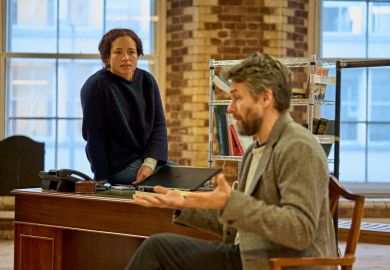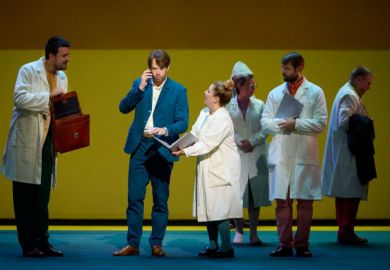A new exhibition uses rarely seen documents to throw a spotlight on six scenes from Shakespeare’s life.
At the time of the Shakespeare festival during the 2012 London Olympics, Gordon McMullan - director of the Shakespeare Centre at King’s College London - was worried that cultural organisations might forget about this year’s 400th anniversary of Shakespeare's death.
He had also been doing research on Israel Gollancz, the English professor at King’s who chaired the committee for the 300th anniversary celebrations in 1916 and whose commemorative volume The Book of Homage to Shakespeare, featuring contributors from around 60 countries, he sees as marking “the beginning of global Shakespeare”.
“If King’s then,” reflected Professor McMullan, “why not King’s now?” It was this which led him to start holding discussions for the Shakespeare 400 celebrations, now involving 25 partners.
For its own major contribution to the season, King’s is hosting the By me William Shakespeare: A life in writing exhibition of material from the National Archives. Shakespeare’s will is on display (and images of several others “proved”, or registered, in the same month, including one where a husbandman bequeathed “one lamb apiece” to each of his grandchildren and “two kettles the best and the worst” to another relative).
So too are the documents featuring four of the six extant examples of Shakespeare’s own signature, lists of the plays performed at the Royal Court in 1604-5 and accounts recording a grant of red cloth to Shakespeare for his participation in James I’s coronation procession.
For Hannah Crummé, Shakespeare researcher at the National Archives, the documents “show people how we know about history, present them with the evidence, [show] how we are able to write an Early Modern life” while also providing revealing glimpses of “Shakespeare the man and his creative process”.
“It’s the first time in a long time they’ve been gathered together for public display,” she said, “and the first time we tried to tell the story of Shakespeare’s career in London with them".
For Professor McMullan, the main goal of the exhibition is to “keep working away at the Romantic understanding of Shakespeare as a genius sitting in an attic having inspiration from the heavens”.
Instead, he said, the material reveals Shakespeare as “someone who lived with a family of refugees, was involved as a sort of matchmaker in relationships, was very much embedded in his acting company, who had the luck to make some money when he became a shareholder in the theatre as well as the company at the time when they had to move from Shoreditch to Southwark. It shows how close to the bone the theatres could be politically and how the theatre industry was competitive in the way that Hollywood studios are today.”
POSTSCRIPT:
The By me William Shakespeare: A life in writing exhibition can be seen at King’s College London until 29 May.
Register to continue
Why register?
- Registration is free and only takes a moment
- Once registered, you can read 3 articles a month
- Sign up for our newsletter
Subscribe
Or subscribe for unlimited access to:
- Unlimited access to news, views, insights & reviews
- Digital editions
- Digital access to THE’s university and college rankings analysis
Already registered or a current subscriber? Login




